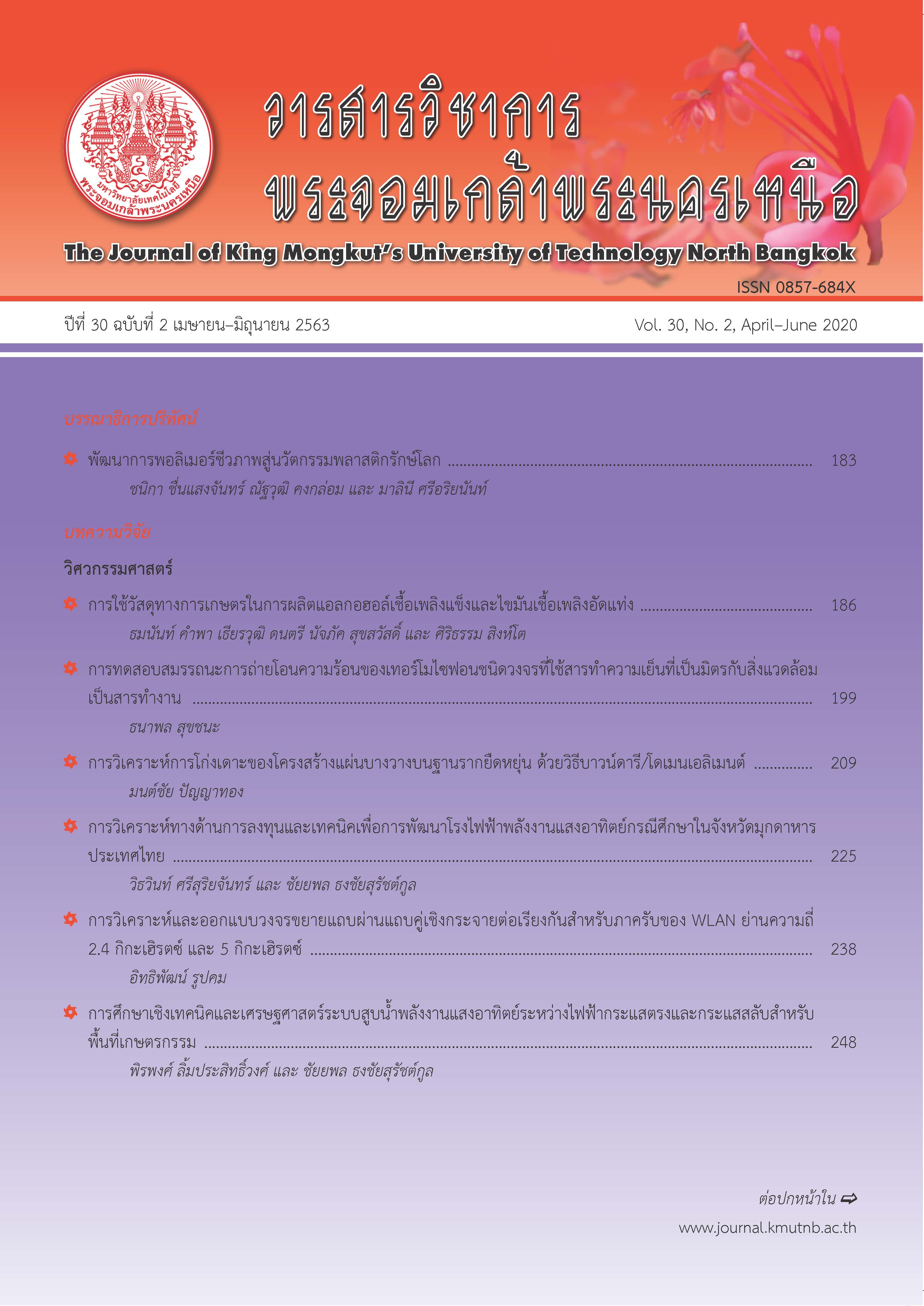การพัฒนารูปแบบการจัดการองค์กรสำหรับธุรกิจอุตสาหกรรมไทยในยุคเศรษฐกิจพลิกผัน
Main Article Content
บทคัดย่อ
การพัฒนารูปแบบการจัดการองค์กรสำหรับธุรกิจอุตสาหกรรมไทยในยุคเศรษฐกิจพลิกผัน มีวัตถุประสงค์เพื่อ 1) ศึกษาองค์ประกอบของการจัดการองค์กรสำหรับธุรกิจอุตสาหกรรมไทยในยุคเศรษฐกิจพลิกผัน 2) สร้างและพัฒนารูปแบบการจัดการองค์กรสำหรับธุรกิจอุตสาหกรรมไทยในยุคเศรษฐกิจพลิกผัน และ 3) เพื่อจัดทำคู่มือการจัดการองค์กรสำหรับธุรกิจอุตสาหกรรมไทยในยุคเศรษฐกิจพลิกผัน ใช้การวิจัยแบบผสมผสานเชิงคุณภาพและเชิงปริมาณ ด้วยเทคนิควิจัยเดลฟายการวิเคราะห์องค์ประกอบ และการสนทนากลุ่ม กลุ่มผู้ให้ข้อมูลในการดำเนินการวิจัย ได้แก่ ผู้บริหารระดับสูง ที่ปรึกษาธุรกิจอุตสาหกรรม และผู้เชี่ยวชาญด้านธุรกิจอุตสาหกรรม เครื่องมือที่ใช้ในงานวิจัย คือ แบบสัมภาษณ์ แบบสอบถาม และแบบบันทึกการสนทนากลุ่ม วิเคราะห์ข้อมูลด้วยวิธีวิเคราะห์เชิงเนื้อหา และการวิเคราะห์ทางสถิติ โดยใช้ค่าเฉลี่ย ค่ามัธยฐาน ค่าพิสัยระหว่างควอไทล์ และสถิติวิเคราะห์องค์ประกอบ (Factor Analysis) ผลการวิจัยพบว่า รูปแบบการจัดการองค์กรสำหรับธุรกิจอุตสาหกรรมไทยในยุคเศรษฐกิจพลิกผัน มีองค์ประกอบหลัก 4 ด้าน ได้แก่ ด้านลักษณะองค์กร มี 5 องค์ประกอบย่อย ได้แก่ 1) ทิศทางและวิสัยทัศน์ 2) กลยุทธ์องค์กร 3) โครงสร้างและวัฒนธรรม 4) การสร้างนวัตกรรม และ 5) การสร้างเครือข่าย ด้านกระบวนการทำงานที่มีระบบการทำงานที่แม่นยำ ด้านการจัดการทรัพยากรมนุษย์มี 2 องค์ประกอบย่อย ได้แก่ 1) การบริหารและพัฒนาทรัพยากรบุคคล และ 2) การสร้างคนเก่ง ด้านผู้นำองค์กรมี 4 องค์ประกอบย่อย ได้แก่ 1) การนำแบบสร้างการเปลี่ยนแปลง 2) การนำแบบร่วมมือร่วมใจ 3) การนำแบบกล้าหาญและสร้างสรรค์ และ 4) การนำแบบยืดหยุ่นและรวดเร็ว คู่มือการจัดการองค์กรสำหรับธุรกิจอุตสาหกรรมไทยในยุคเศรษฐกิจพลิกผันแบ่งออกเป็น ส่วนที่ 1 สาระสำคัญของคู่มือ และส่วนที่ 2 แนวทางการจัดการองค์กร ประกอบด้วย 4 หมวดการพัฒนา 12 หน่วยการเรียนรู้ รูปแบบได้รับความเห็นชอบด้วยมติเอกฉันท์ในการสนทนากลุ่มจากผู้ทรงคุณวุฒิ และคู่มือได้รับการประเมินโดยผู้เชี่ยวชาญในการสนับสนุนการเจริญเติบโตของธุรกิจในยุคเศรษฐกิจพลิกผัน
Article Details
บทความที่ลงตีพิมพ์เป็นข้อคิดเห็นของผู้เขียนเท่านั้น
ผู้เขียนจะต้องเป็นผู้รับผิดชอบต่อผลทางกฎหมายใดๆ ที่อาจเกิดขึ้นจากบทความนั้น
เอกสารอ้างอิง
[2] J. Manyika, M. Chui, and J. Bughin. (2013, May.). Disruptive technologies: Advances that will transform life, business, and the global economy. McKinsey & Company [Online]. Available: https://www.mckinsey.com/business-functions/digital-mckinsey/ourinsights/disruptive-technologies
[3] P. F. Nunes, J. Bellin, and I. Lee. (2016). Thriving on disruption: How to become fearless in the face of devastating innovation. Accenture. [Online]. Available: https://www.accenture.com/t20160629T014207__w__/us-en/_acnmedia/PDF-24/Accenture-Thriving-Disruption-POV.pdf
[4] M. Sheetz. (2017, August). Technology killing off corporate America: Average life span of companies under 20 years. CNBC [Online]. Available: https://www.cnbc.com/2017/08/24/technology-killing-off-corporations-averagelifespan-of-company-under-20-years.html
[5] Thailand Research Development Institute. (2018, Apr.). TDRI Public Conference 2018. Thailand Development Research Institute. Bangkok, Thailand [Online]. Available: https://tdri.or.th/2018/04/tdri-annual-public-conference-2018/
[6] T. Ekakoon, Research Methodology in Behavioral Sciences and Social Sciences. Ubolratchathanee: Ubon Ratchathani Rajabha Textbook Publishing Center, 2000 (in Thai).
[7] R. H. Waterman, T.J. Peters, and J. R. Phillips, “Structure is not organization Business Horizons,” Business Horizons, vol.23, no.3, pp. 14–26. 1980.
[8] J. R. Galbraith. (2016). The Star Model. [Online]. Available: http://www.jaygalbraith.com/images/pdfs/ StarModel.pdf
[9] D. Nadler and M. Tushman, “A model for diagnosing organizational behavior,” Organizational Dynamics, vol. 9, no. 2, pp. 35–51, 1980.
[10] W. W. Burke and G. H. Litwin, “A causal model of organizational performance and change.” Journal of Management, vol. 18, no. 3, pp. 523–545, 1992.
[11] Free Management ebooks. (2018). Weisbord’s Six-Box Model. Free Management ebooks [Online]. Available: http://www.free-managementebooks.com/news/weisbords-six-box-model/
[12] R. Wade, A. Tarling, and R. Assir. (2017, May). Agile leadership in an age of digital disruption. Global Center for Digital Business Transformation, an IMD and Cisco Initiative. Lausanne, Switzerland [Online]. Available: https://www.imd.org/research-knowledge/articles/agile-leadershipin-an-age-of-digital-disruption/
[13] S. Nananukul. (2012). Business to Business Networking. V-Reform [Online]. Available: http://v-reform.org/u-knowledges (in Thai).
[14] T. Boonvatcharapai, W. Jessdaluk, and K. Tantrabundit, “Organization creativity for service innovation in Thai boutique hotels,” Veridian E-Journal, Silpakorn University, vol. 9, no. 3, pp. 1242–1259, 2017 (in Thai).
[15] E. G. Chambers, M. Foulon, H. Handfield-Jones, S. M. Hankin, and E. G. Michaels, “The war for talent,” The McKinsey Quarterly, vol. 3, no. 3, pp. 44–57, 1998.
[16] The CIPD and Hays. (2017). Resourcing and Talent Planning 2017. CIPD [Online]. Available: https://www.cipd.co.uk/knowledge/strategy/resourcing/surveys

